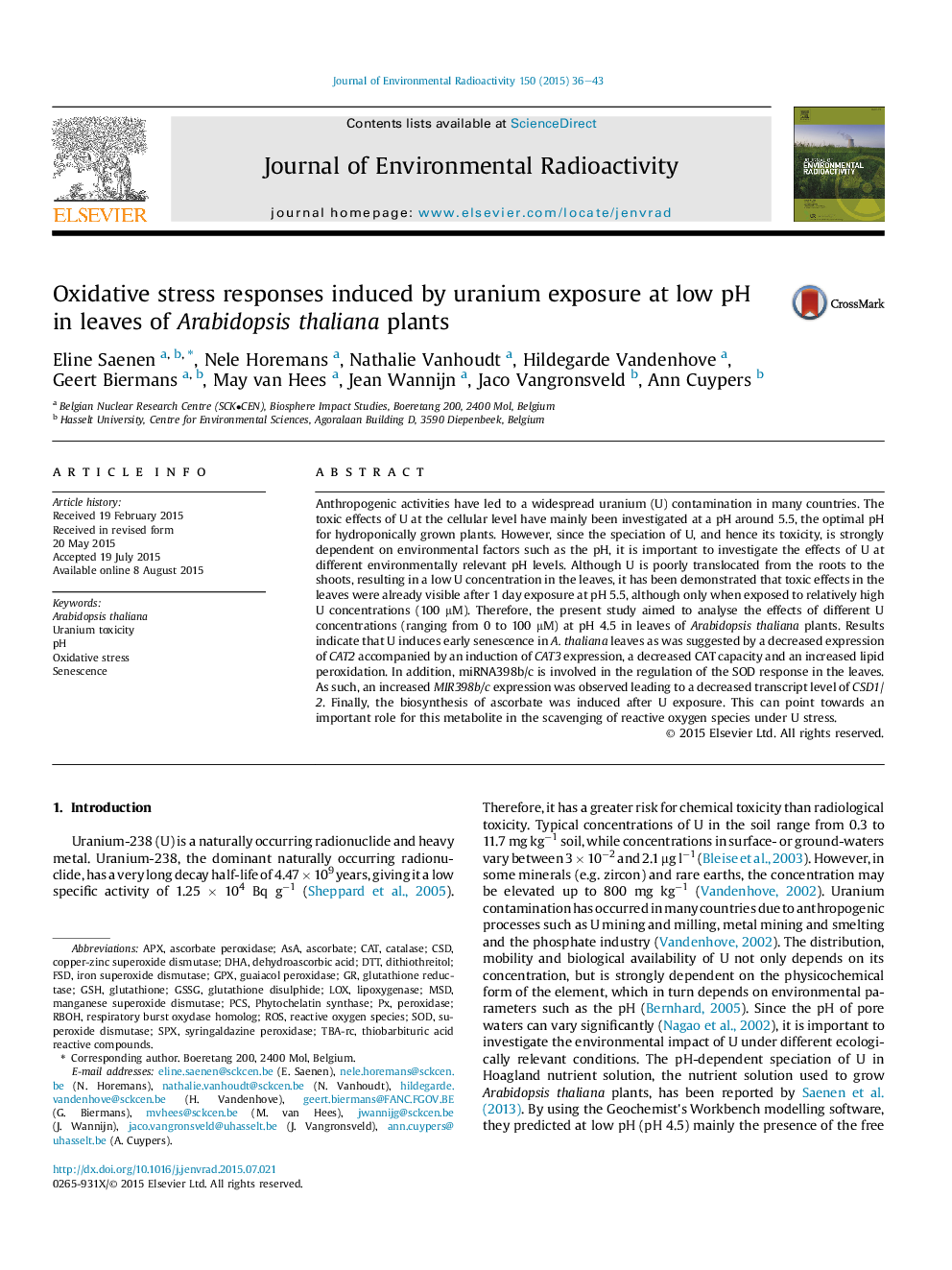| Article ID | Journal | Published Year | Pages | File Type |
|---|---|---|---|---|
| 1737782 | Journal of Environmental Radioactivity | 2015 | 8 Pages |
•Uranium induces early senescence in A. thaliana after uranium exposure.•Ascorbate is involved in scavenging reactive oxygen species under uranium stress.•miRNA398b/c is involved in the regulation of the SOD response under uranium stress.
Anthropogenic activities have led to a widespread uranium (U) contamination in many countries. The toxic effects of U at the cellular level have mainly been investigated at a pH around 5.5, the optimal pH for hydroponically grown plants. However, since the speciation of U, and hence its toxicity, is strongly dependent on environmental factors such as the pH, it is important to investigate the effects of U at different environmentally relevant pH levels. Although U is poorly translocated from the roots to the shoots, resulting in a low U concentration in the leaves, it has been demonstrated that toxic effects in the leaves were already visible after 1 day exposure at pH 5.5, although only when exposed to relatively high U concentrations (100 μM). Therefore, the present study aimed to analyse the effects of different U concentrations (ranging from 0 to 100 μM) at pH 4.5 in leaves of Arabidopsis thaliana plants. Results indicate that U induces early senescence in A. thaliana leaves as was suggested by a decreased expression of CAT2 accompanied by an induction of CAT3 expression, a decreased CAT capacity and an increased lipid peroxidation. In addition, miRNA398b/c is involved in the regulation of the SOD response in the leaves. As such, an increased MIR398b/c expression was observed leading to a decreased transcript level of CSD1/2. Finally, the biosynthesis of ascorbate was induced after U exposure. This can point towards an important role for this metabolite in the scavenging of reactive oxygen species under U stress.
